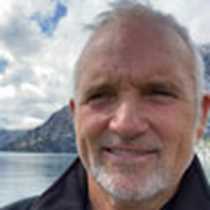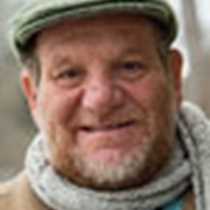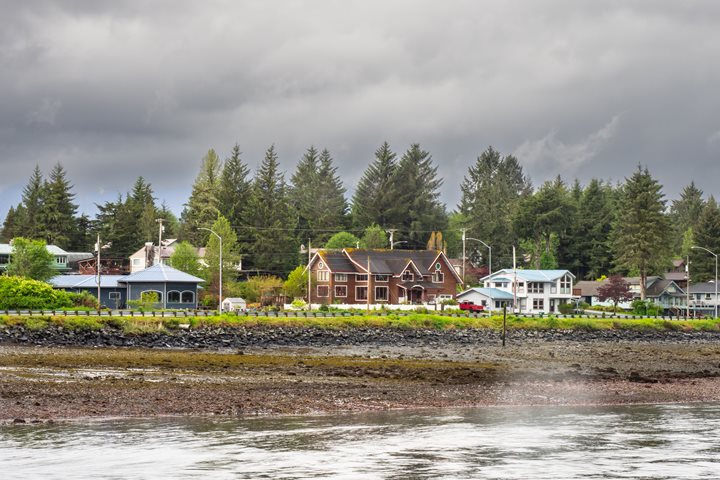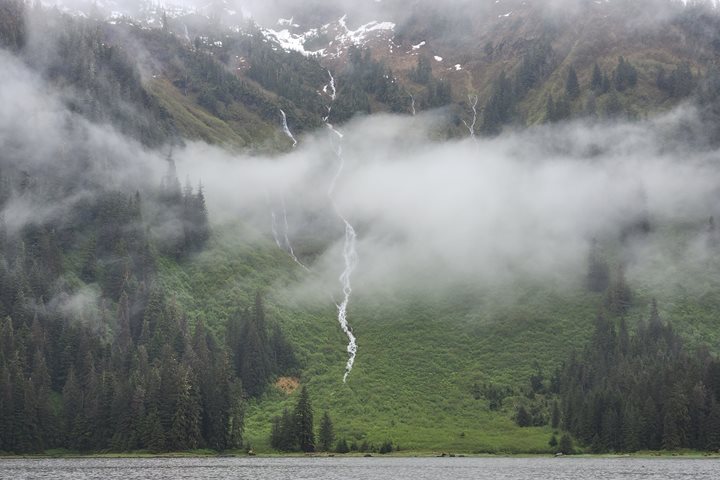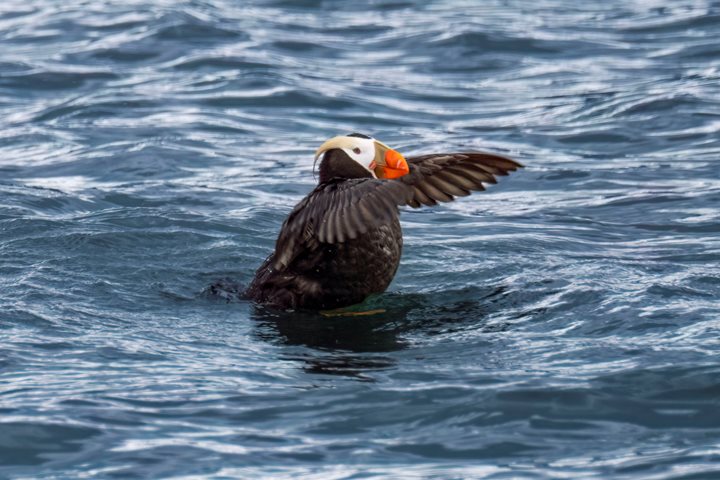We woke this morning in Fredrick Sound on our way to Ideal Cove, an aptly named anchorage, to begin our exploration of Mitkof Island south of Petersburg, Alaska. Hikers enjoyed a three-hour hike around the lake and an investigation of the forest ecology. The temperature rose as we walked the trail and by mid-morning, the sun once again broke through the overcast. Sitka spruce and western hemlock trees provide a canopy above the dense understory of countless flowering shrubs mosses and lichen. Moose tracks along the boardwalk trail spoke of the presence of large mammals and while none appeared, we were treated to the antics of two woodpeckers (red-breasted sap suckers) engaged in either a territorial dispute or mating ritual. The birds flitted closely around us as we watched in silence. Turn-around was at the eastern edge of Hill Lake for all but the aerobic hikers. Here we were rewarded with a brilliant view of the glassy water.
Lunchtime back on National Geographic Sea Bird provided time to refresh and prepare for the afternoon in Petersburg. This picturesque fishing town of nearly 3,000 people was founded by Norwegian, Peter Buschmann, who took advantage of the rich fishery nearby and the abundant ice provided by the Laconte Glacier. The town economy is still based on fishing, as is obvious by the fleet of trawlers, crabbers, longliners, and purse seiners docked within the harbor. We split our time between exploring the town independently or by following naturalist-led walks. One of the walks was a “dock” walk among the boats and another was across the Wrangell Narrows to Kupreanof Island through a mature forest to a well-developed bog or muskeg. Though hard to see from the Sea Bird, the muskegs are important and exotic ecosystems and cover an estimated ten percent of the land surface of Southeast Alaska. Saturated soil and standing water lead to acidic and nutrient-poor conditions that support an unusual array of plants. Stunted and bent shore pine, and juniper seldom rise above six feet in height and are widely dispersed through a landscape occupied by a thick and spongy sphagnum moss through which small but beautiful flowers protrude, including delicate bog laurel, Labrador tea, Bog-rosemary, and Bog orchid. The nutrient-poor nature of the water-soaked soil has led to strange adaptations in which plants entice, entrap, and consume small insects. Two of these insectivorous plants, round-leaf sundew and great sundew, were observed.
Following a feast of crab, ribs, corn on the cob, cole slaw, and rubarb crisp, we left Petersburg heading north in Frederick Sound. We followed a humpback whale feeding in a sea, smooth as glass, and lit by the setting sun. We will cruise north tonight and head to Tracy Arm and the Sawyer Glacier for yet another adventure in Southeast Alaska.



